Uncover the intricate relationship between the personas we present to the world and the hidden parts of our psyche. Learn how embracing these darker aspects can lead to a more authentic, balanced life. Dive into the universality of the Dark Goddess archetype and its role in understanding ourselves and nature.
Unveiling the Mask: The Persona and Its Archetypes
Psychotherapist Carl Jung introduced a fascinating concept about the human psyche, highlighting the different parts that constitute our inner world. Central to this is the idea of the ‘persona’ – a term derived from the Latin word for ‘mask’. Jung suggests that we all wear social masks. Adopting various personas based on the roles we play in life – be it a mother, a co-worker, or a spouse. These personas are archetypal, helping us organize our experience of life, and often show only what we believe the world wants to see.
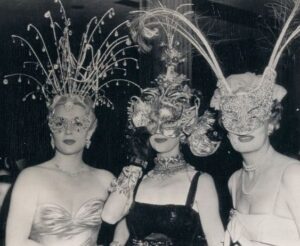
In today’s digital age, this concept is perhaps more relevant than ever (Reminds that episode of Black Mirror). Our social media profiles often portray an idealized version of ourselves. A persona that shuns away from the deeper, darker, and less accepted aspects of our being. But are we, by doing so, hindering our ability to live authentically?
The Shadow: Our Inner Darkness
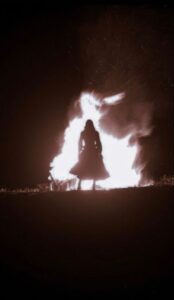
Jung’s concept of the ‘shadow’ delves deeper into the psyche. This hidden part of our subconscious is a storehouse. Full of repressed ideas, beliefs, impulses, fears, and even perversions. These are aspects of ourselves that we have accumulated over our lifetime. Often ignored or suppressed due to social norms or personal fears. This avoidance can lead to a block in living a fully authentic life, preventing us from truly loving ourselves.
But what if we dared to acknowledge these core wounds and dark spaces? Could embracing our vulnerability and perceived weaknesses change our pattern of self-sabotage? It’s an intriguing thought. By owning and understanding our shadow, we might release ourselves from the chains of guilt, anger, or shame.
Deep Dark: The Creative Energy Within

We are often taught to fear the dark. Yet there is a powerful creative energy in that space, yearning to be illuminated. Just like seeds that take root in the darkness, there is a fertile ground within us. The coexistence of light and darkness is essential. We cannot have one without the other. This duality is at the core of our being.
Walking into our darkest places with boldness and love is not just an act of bravery. It’s an essential step towards achieving a balanced and holistic self.
Embracing the Forbidden
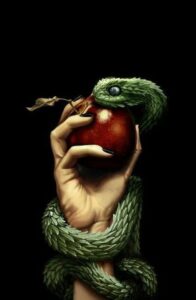
Dark goddesses could help you to bring another dimension to your understanding of your psyche. These archetypes mostly represent the parts of nature that are shunned. Even excluded from society and conventional religious practices. Think about it. All embody the aspects of existence that are typically considered taboo. Those that are not to be approached or encouraged, especially within ourselves.
However, if you seek a comprehensive understanding of themselves you should go dark! Poke their connection to nature. Engage with a Dark Goddess.
Know Your Dark Goddesses
Everyone has a shadow self, and the symbolization and personalization of the shadow can manifest as the dark goddess. We can relate the mythological stories of dark goddesses to our own experiences. Women often find it not too difficult to see similarities in the struggles of the dark goddesses with oppression, rejection, subjugation, and neglect. Because ages have passed, but some things still haven’t changed.
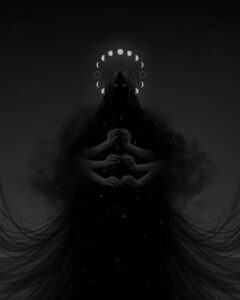
Kali, Lilith, Medusa, Persephone, Hekate, Psyche, Isis, Ishtar/Inanna are among the principal dark goddesses. Many dark goddesses can be convincing in reminding you that you are not alone, especially during the darkest times of your life (particularly when you think no one understands).
The development and full comprehension of working with dark goddesses take time. However, the more you work, the better you understand yourself. Eventually, they will offer you their guidance and wisdom. For example, Lilith’s story depicts a shadow self that, instead of being recognized and healed, is alienated, expelled, pushed out of society, left alone, and exiled.
Kali: The Destroyer
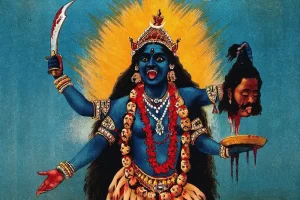
She is a central figure among Dark Goddesses. Kali embodies destruction, chaos, transformation, rebirth, and primal energy. Her name means ‘black’ in Sanskrit, symbolizing the void from which life emerges and to which it returns. Kali is not just about literal destruction; she represents the breaking down of ego and false identities, guiding us toward true wholeness.
In spiritual practices, invoking Kali can powerfully confront and conquer inner demons. She challenges us to explore our psyche’s dark corners. This journey with Kali is about embracing transformative power, realizing profound change often emerges from life’s darkest aspects.
Kali’s fierce, unapologetic energy reminds us that transformation often requires facing our deepest fears. She embodies the untamed, primal force within and around us, terrifying yet awe-inspiring, always leading to deep transformation.
Hecate: Queen of Crossroads
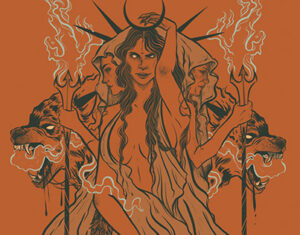
Hekate, the Dark Moon Goddess, reigns over the night and the crossroads. As the guardian of the spirit world, she holds dominion over all things mystical and unseen. Hekate is the protector of travelers at crossroads. Also the Goddess of witches, magic, ghosts, and witchcraft. With her sacred black dog and two torches, she stands as a symbol of protection, insight, and guidance in darkness.
Invoke Hekate when seeking direction at life’s crossroads. She offers keys to unlock our truest paths, illuminating the way with her torches. Her energy supports those making important decisions or embarking on new journeys. Hekate’s presence brings clarity to our choices, helping us navigate the complexities of life.
Hekate’s role as a protector is especially significant. Her watchful eye guards against spiritual dangers, offering a shield to those who venture into the unknown. She is a beacon in the dark, a comforting presence for those feeling lost or uncertain.
Persephone: Symbol of Life Cycles
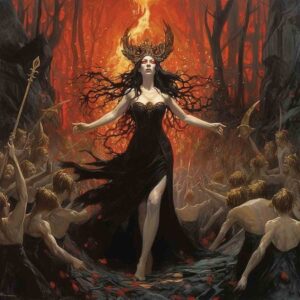
Persephone, daughter of Zeus and Demeter, reigns as another Queen of the Underworld. Her story intertwines with themes of abduction, seasonal change, death, and rebirth. Hades, Lord of the Underworld, took her, marking a significant turn in her life and the world’s cycles.
Demeter called upon Hekate for help in finding Persephone. As a Goddess of harvest and fertility, Persephone’s absence brought profound changes to the Earth. Her time in the Underworld each year results in winter, as Demeter mourns and the Earth becomes barren.
Persephone’s stay in the Underworld is not just a tale of confinement. It symbolizes the balance between life and death, light and shadow. Every spring, her return to the Upperworld brings rejuvenation and growth. This cycle of departure and return mirrors the seasonal shifts and life’s inherent cycles of change.
Lilith: The Misfit
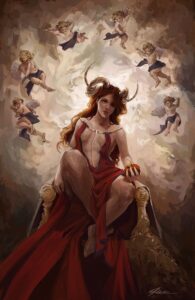
Lilith represents a powerful aspect of the dark goddess archetype. Her story is one of alienation, exile, and societal rejection. Unlike other figures who find reconciliation or transformation, Lilith’s tale is about a shadow self that remains unrecognized and unhealed, pushed to the fringes.
In many narratives, Lilith stands as a symbol of what happens when society expels its darker elements instead of acknowledging and integrating them. She embodies the parts of us that we often push away – the unconventional, the rebellious, the aspects deemed unacceptable. Her story resonates with the experience of being left alone, cast out, and misunderstood.
Lilith’s journey offers a stark contrast to the more harmonious narratives of other dark goddesses. Instead of transformation and rebirth, her path highlights the pain of isolation and the consequences of rejecting parts of our nature. Lilith asks us to consider the parts of ourselves we have exiled, the aspects we have deemed too difficult or too dark to face.
Medusa: A Tale of A Victim
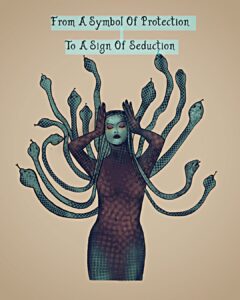
Medusa’s story is a poignant example within the dark goddess narrative. Originally celebrated for her beauty, she endured punishment and transformation into a monster. Her tale stands as a stark reminder of the consequences of societal judgment and alienation.
Her journey from beauty to beast encapsulates themes of injustice and transformation. Medusa did not choose her fate; it was thrust upon her. Her story reflects the experiences of those who suffer unjustly at the hands of others, particularly in response to qualities like beauty in htis manner.
Medusa’s tale is not just about her monstrous form; it’s about the deeper meanings behind her transformation. She represents the dangers of objectification and the swift turn from admiration to fear. Her story urges us to consider how we perceive and treat others, especially those who fall from societal grace.
These are not the oonly dark goddesses you can work with for more read this article!
